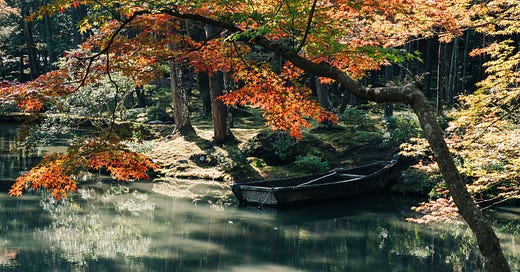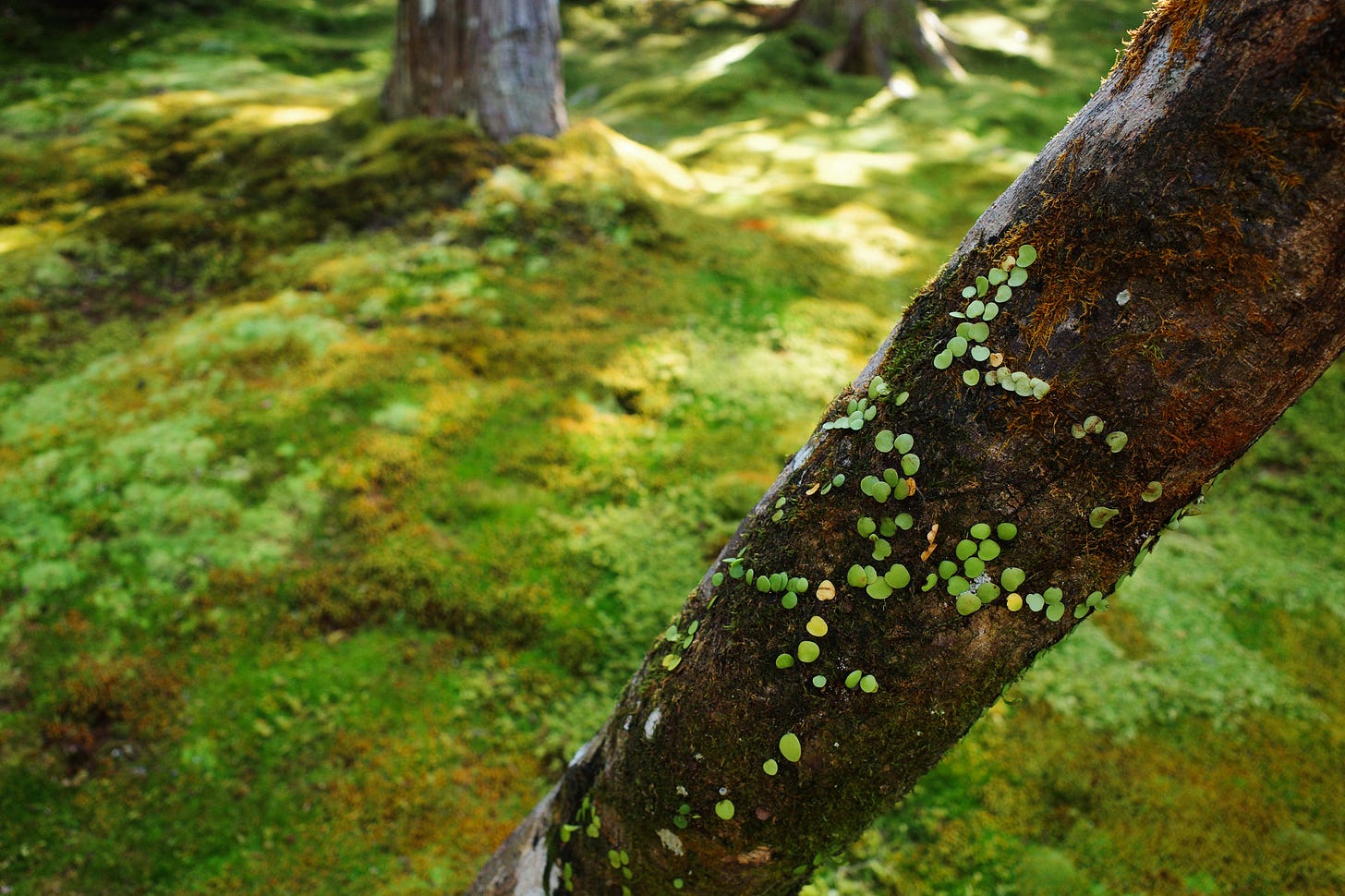In Kyoto I visited Saihoji Temple - a true Zen paradise. Centuries old, the temple grounds are covered by 120 kinds of moss, earning it the name Kokedera or Moss Temple.
In my last post about Kyoto I mentioned overtourism and how Kyoto is struggling to cope with a huge influx of tourists throughout the year. It turns out this is nothing new. In 1977, Saihoji Temple was so overrun with tourists, the monks decided to take action to limit visitor numbers.
From that time onwards, tourists were required to request a visit by sending a letter from overseas detailing their preferred dates with a reply paid coupon. It was not uncommon to wait months for a reply. Technology has finally caught up with the booking process, and now you can book a slot online. I’m embarrassed to admit that I was running 20 minutes late for my visit, but thankfully, they still let me in.
The visit starts at the main gates where you are welcomed and given a map and a calligraphy pen. You are then ushered to the main hall, where you remove your shoes and walk along wooden floor boards to a small desk.
Before viewing the garden, you must first copy Buddhist sutras. This is not nearly as onerous as it sounds - Japanese characters are faintly printed on a piece of paper, so it’s more like tracing. I can’t show you any photos of this as photography in the hall is prohibited. Sutra copying completed, the shoes are back on and you are free to explore the garden until (what’s left of) your 90 minutes is up.
The visit didn’t get off to a good start due to the obnoxious behaviour of a small number of my fellow tourists. If nothing else, this was a good primer in trying to rise above it all and be more Zen. It must’ve been truly dreadful in 1977.
That was soon forgotton as I walked along the path, paying close attention to the patterns, shapes, and textures of nature. As you can see, the garden is beautiful beyond words. I’d love to tell you what kinds of moss, plants, and trees are in these photos, but I haven’t a clue.
All I know is that deep in the garden when the other visitors had trickled towards the exit, there was just me, ancient moss, and the chirping of birds in the trees above. For a brief moment, I understood what others who have long since departed this world must’ve felt when they stood here. I was at peace.
You’ll notice there are no people in these photos. That was an act of being mindful and patient as I composed each shot. All images were taken on the Olympus OM-1 and the Ricoh GRiii.
Coming soon, my next travel photography post features photos from a walk between two of Kyoto’s Randen tram stations.
For film lovers, I will soon be sharing a review of Speed 400 made in Belgium Agfa 35mm film.












